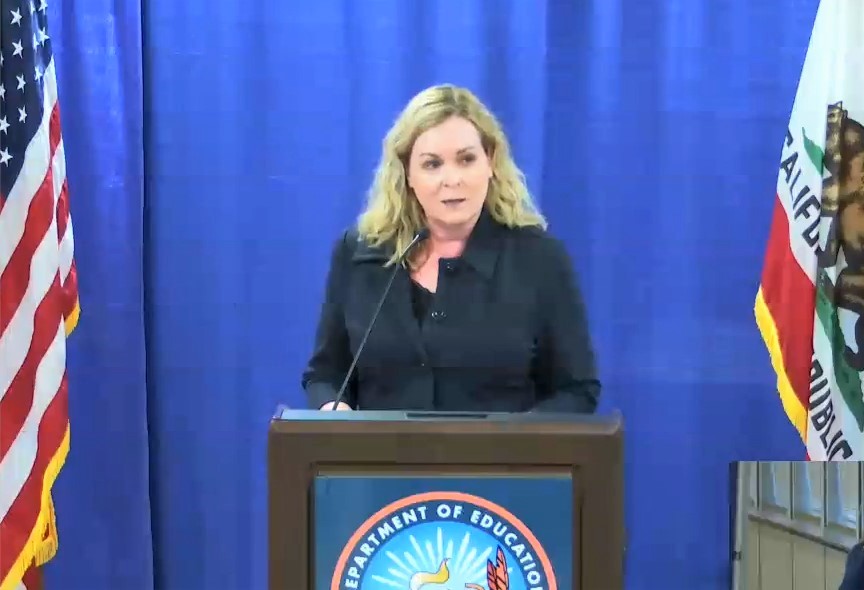To offer a look at some of the practices and strategies underway across the state, the California Department of Education hosted an April 2 webinar that attracted roughly 7,000 viewers — a reminder of the vast yearning for knowledge about implementing special education services during school closures. (An archived version of the webinar is now online).
Though executed differently depending on LEA location and size, presenters and the CDE zeroed in on a common list of best practices:
- Identify the needs of students and families as quickly as possible.
- Based on the needs analysis, develop a distance learning plan. This is a best practice tool and not a mandate.
- Identify staff and teacher needs and address them, as possible.
- Communicate with students and families frequently to reassure them that support is available and to check in.
- Hold virtual Individual Education Program meetings.
- Provide ongoing support and resources to families, students and teachers.
Communication and collaboration received the most attention during the webinar. “I think we saw a through line there around parents and families and teachers and administrators all working together to try to make this happen in California,” said Kristin Wright, head of the CDE’s special education division.
Focusing on what can be done
Mindy Fattig, executive director of the Humboldt-Del Norte Special Education Local Plan Area, said the agency is creating distance learning plans by looking at already-agreed-upon goals and objectives from students’ IEPs to inform what services teachers can realistically implement. The limitations of distance learning, Fattig said, must not stand in the way of making meaningful virtual connections.
“Not all goals can be addressed through distance learning,” she said. “We recognize that. We understand that, and we do understand that services are going to be provided in some form of compensatory education, but we do want to focus on not what we can’t do, but what we can do.”
Differentiations will be made based on student abilities and capabilities, Fattig said, as well as by method of instruction — whether it’s printed and mailed packets, phone calls, emails or online platforms.
One way to ensure schools are meeting students’ needs is to log communications and interactions, and then share that information with specialists to provide greater support. The principle is at the core of efforts in Los Angeles Unified School District, said Anthony Aguilar, district chief of special education, equity and access. “We’re asking that (teachers) log in all these interactions so that we can identify the gaps and where stronger connections are going to be needed for our students,” he said.
Under the district’s distance learning plan for students with disabilities, teachers are asked to schedule office hours, collaboration time and instructional interactions with their students to as closely as possible reflect their student’s IEP. To aid teachers and contracted providers, the district also shared guidance on what a usual day could look like.
‘Not business as usual’
That new “usual day” is looking quite foreign to educators such as Robbie Kreitz, a middle school resource specialist program teacher in the East Bay’s Dublin USD, particularly as it comes to IEP meetings with students and their families. “That is the most overwhelming thing that I think I’ve been hearing from my colleagues, is what are these virtual meetings going to look like?” Kreitz said.
Kreitz said concerns from parents and teachers revolve around questions like “How do you sign meeting documents? How will you track attendance? What do we do if students don’t participate?” Early answers and practices include using software such as DocuSign and walking parents through an IEP meeting prior to going live on a platform like Zoom or Google Hangouts.
“It’s not business as usual, but it’s still business in support of the student and keeping the student at the center of everything.” Kreitz said.
Outside of the many outstanding questions and challenges ahead, however, Kreitz said it has been heartening to see the effort that educators and officials are putting forward both in Dublin USD and throughout California. “I think if we continue the collaboration and communication, we don’t all have to reinvent the wheel in isolation. We can work together to keep us moving forward,” she said.
Next CDE webinar to focus on parent engagement
Wright announced that the CDE plans weekly webinars on topics related to special education during the COVID-19 crisis. Next up at 3 p.m. on Thursday, April 9, is a webinar titled “Distance Learning Innovations in Special Education — Engaging Parents.” It will be livestreamed and archived on the CDE’s Facebook page.





